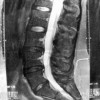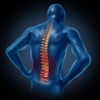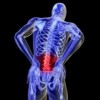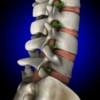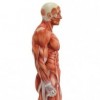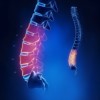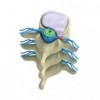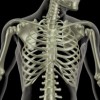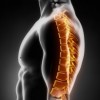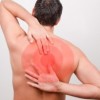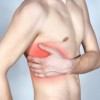Conditions
This condition article is currently being processed by Clinic HQ. All articles will be processed and uploaded as soon as possible. Thank you for your patience.
This condition article is currently being processed by Clinic HQ. All articles will be processed and uploaded as soon as possible. Thank you for your patience.
This condition article is currently being processed by Clinic HQ. All articles will be processed and uploaded as soon as possible. Thank you for your patience.
This condition article is currently being processed by Clinic HQ. All articles will be processed and uploaded as soon as possible. Thank you for your patience.
Lower-Crossed Syndrome or lower-cross syndrome is the term for a particular pattern of muscular imbalance in the lower body. The most common result of lower-crossed syndrome is specific postural changes resulting in a slumped posture with your pelvis tilting forward and the curve of your low back increasing. However these muscular imbalances can, if left, cause the surrounding low back, pelvis and hip joints, ligaments and muscles to loose mobility becoming a contributing factor in the development and recurrence of injuries.
Lumbar Degenerative Disc Disease
Lumbar degenerative disc disease known as lumbar DDD is in fact not a disease and medical professionals even debate whether it is in fact a degenerative condition. The misleadingly named diagnosis is used as a term to describe a condition that affects the discs in your spine (not including a disc herniation) and accounts for a lot of back pain cases. It can occur naturally with age; most people over 30 will have some form of disc degeneration present within their spine. Others may experience symptoms at an earlier age, developing after trauma or repetitive injuries to the back.
Initially lumbar DDD presents itself as moderate to severe back pain and stiffness that comes and goes. The pain has been described as a sharp pain, an intense dull ache almost like toothache and also like a burning sensation.
Lumbar radiculopathy also known as sciatica is the medical term referring to pain and the loss of function in a specific region within the legs. This occurs due to irritation or compression of one of the spinal nerve roots in the low back. Lumbar radiculopathy occurs when the space that the spinal nerve travels through, called the intervertebral foramina starts to decrease. There are a few possible causes of this. Symptoms include pain traveling from the low back into a specific region of the thigh, lower leg or foot. In many cases the leg pain is accompanied by numbness, weakness and pins and needles in a similar distribution to the pain.
Thoracic Degenerative Disc Disease
Thoracic degenerative disc disease known as thoracic DDD is in fact not a disease and medical professionals even debate whether it is in fact a degenerative condition. The misleadingly named diagnosis is used as a term to describe a condition that affects the discs in your spine (not including a disc herniation) and accounts for a lot of back pain cases. It can occur naturally with age; most people over 30 will have some form of disc degeneration present within their spine. Others may experience symptoms at an earlier age, developing after trauma or repetitive injuries to the back.
Initially thoracic DDD presents itself as moderate to severe back pain and stiffness that comes and goes. The pain has been described as a sharp pain, an intense dull ache almost like toothache and also like a burning sensation.
A sternal fracture is the term for a break or fracture of the sternum, more commonly known as the breastbone. A sternal fracture from trauma causes a very intense immediate sharp pain around the fracture site this pain can radiate around into the sides, up into the neck, round into the mid back or down into the abdomen. The fracture will be aggravated by most movements that use the pectoral muscles including arm and neck movements. Deep breathing will cause sharp pains as will lying on your front or side.
Scheuermann's disease is a condition that leads to an increase in the spinal curvature of your thoracic spine, also known as kyphosis. The condition normally occurs between the ages of 13 and 16 when the body is going through rapid and sudden growth spurts. The condition is more prevalent in boys than girls and often is not diagnosed until later in life. Symptoms include sudden upper back pain and stiffness with very poor posture; an overly curved upper back, slouched shoulders and extended low back.
T4 syndrome is a variation of a thoracic (mid back) facet sprain or strain. It has the same injury mechanism but a separate diagnosis due to the combination of its specific location of the 4th vertebrae in the thoracic spine with additional symptoms of arm pain, numbness and pins and needles as well as the normal mid back pain and stiffness.
Rib Fracture & Rib Stress Fracture
A rib fracture is the term for a break or fracture in one or more of the bones of the rib cage. A rib stress fracture is similar to a rib fracture only the break along the rib is incomplete and more like a crack than a break.
A rib fracture from trauma causes a very intense immediate sharp pain around the fracture site this pain can radiate around into the chest, mid back or up into the neck or abdomen. Occasionally a grating sound will heard with breathing or movement. The fracture will mean that even shallow breathing is painful with deep breathing causing excruciating pain.

